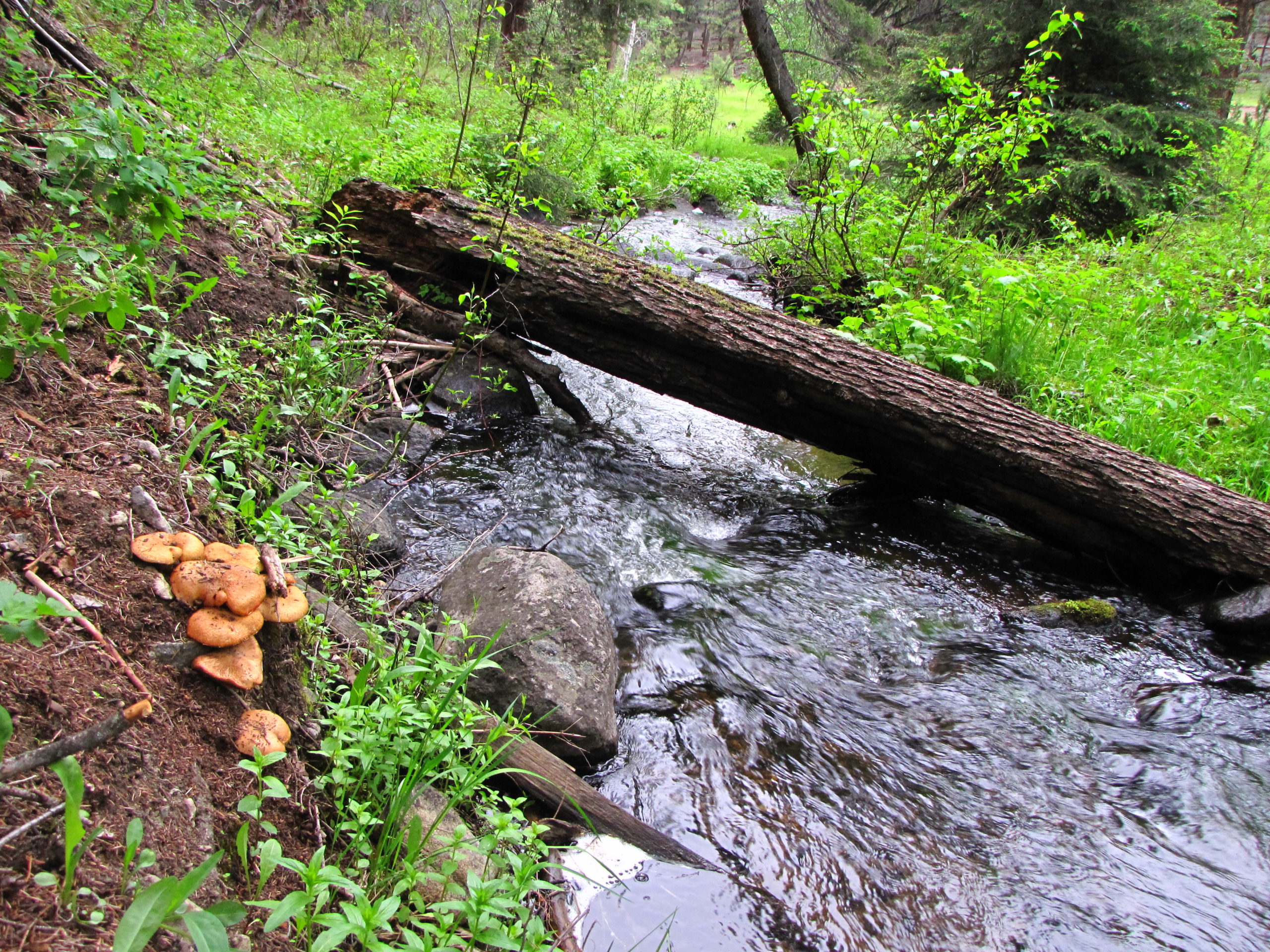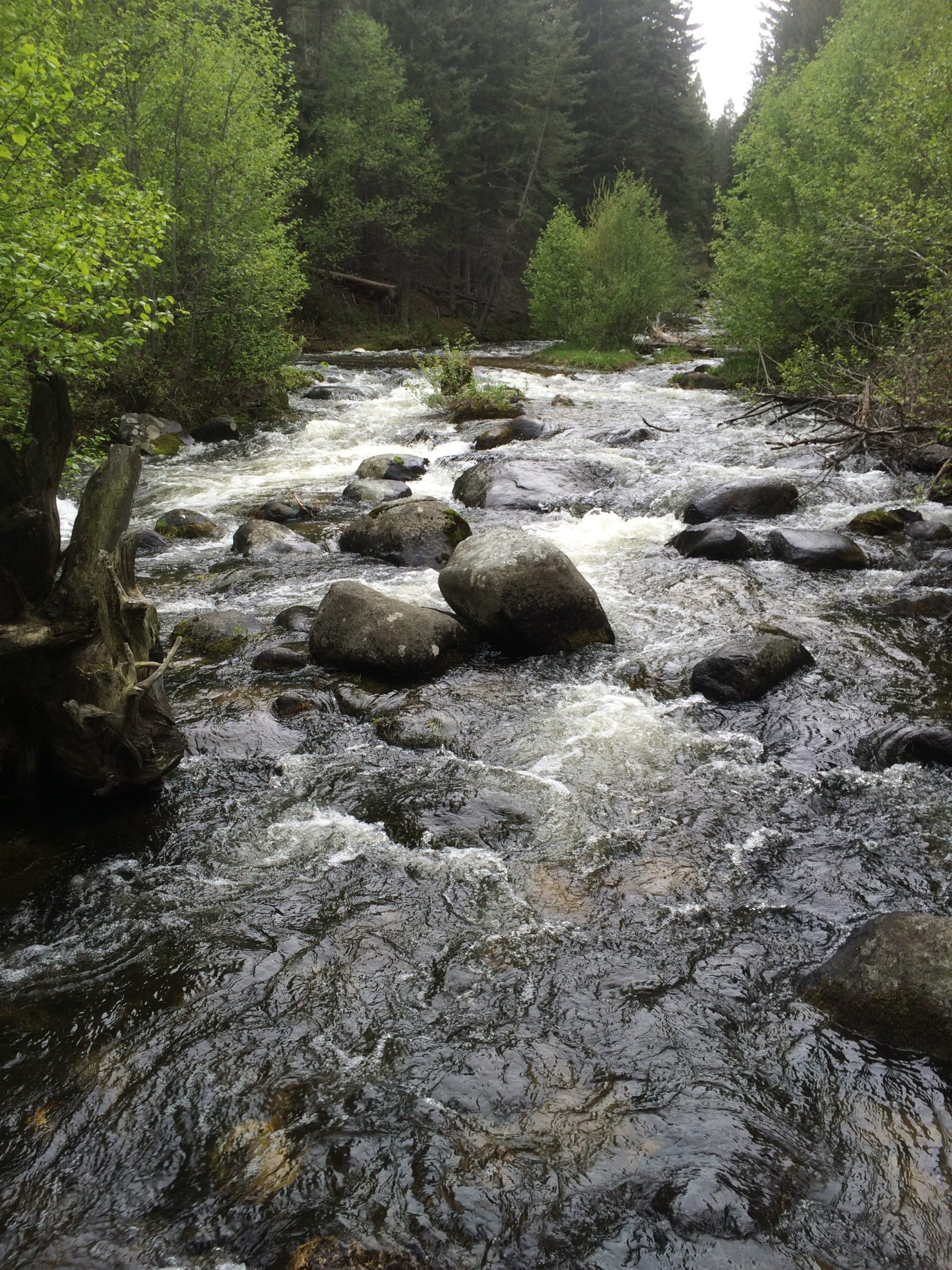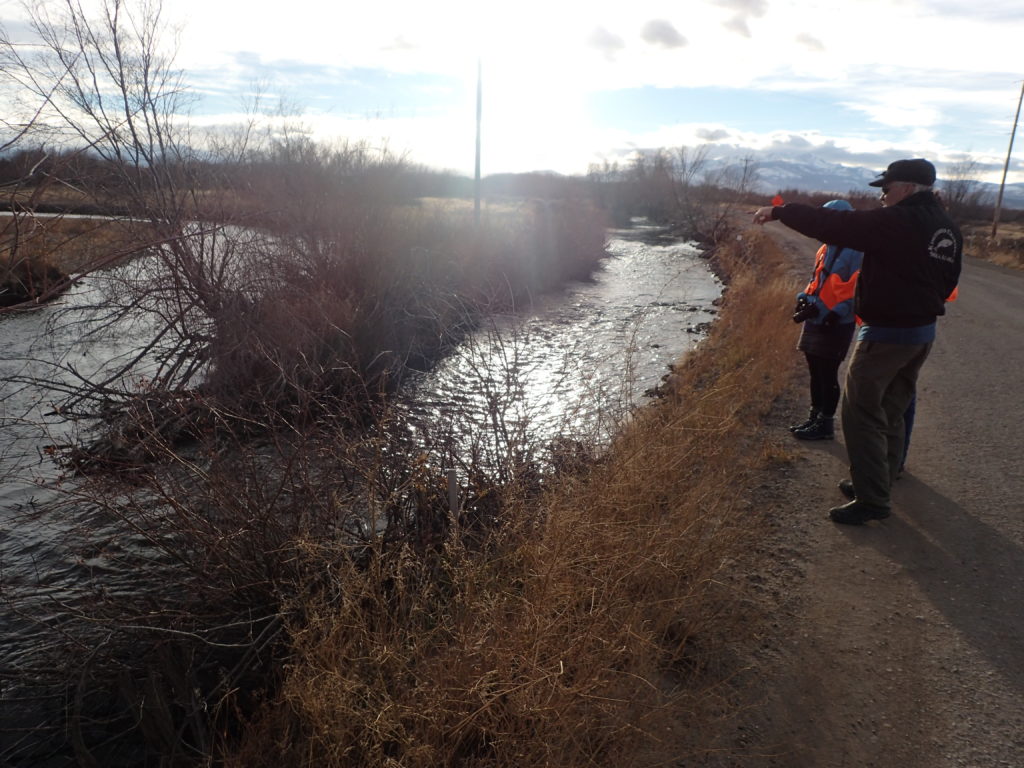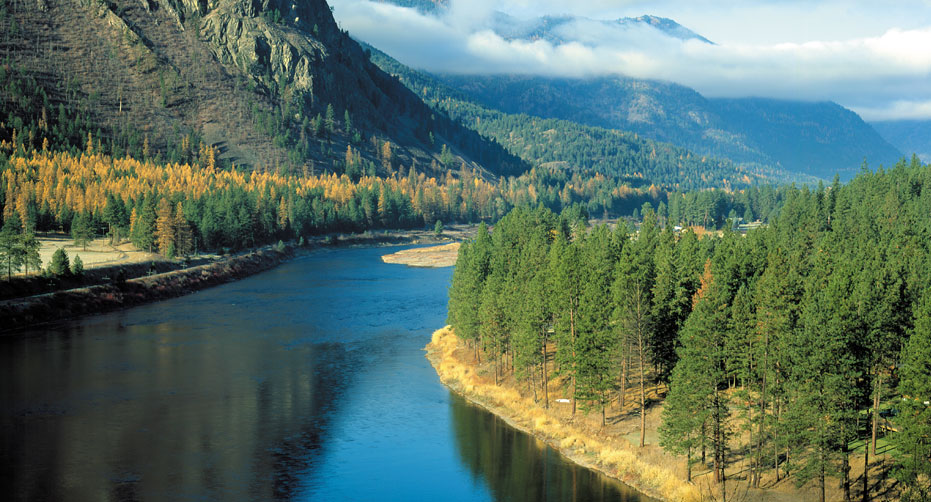To date, we have designed and implemented dozens of projects that have improved 50 miles of streams and added nearly 90 cubic feet of water per second (more than 5 billion gallons per year) to the Upper Clark Fork system. We also work closely with the Montana Natural Resource Damage Program to prioritize projects that re-water thirsty creeks, restore healthy riparian areas, and reconnect streams and fish habitat, focusing on eight key tributaries.
 Cottonwood Creek
Cottonwood Creek
CFC partners closely with the landowner-led, Deer Lodge-based Watershed Restoration Coalition to solve problems on Cottonwood Creek, including: dewatering, barriers to fish passage, degradation of riparian habitat, and impaired water quality. We are working with willing landowners to design and implement a series of projects on key private lands that improve conditions on the creek.
Rancher Mike Applegate installed three new pivot sprinklers, a new concrete irrigation diversion, a combination fish passage/debris screen, and a 1.7-mile-long gravity pipeline that allows for 2,200 gallons of water per minute to remain in the creek. These projects do more than save water for fish—they also save energy and time on the ranch, while assuring that Mike has enough water to support a plentiful hay crop and green pasture.
Downstream, rancher Dan McQueary designed and installed 9 pump-controlled, pipeline-fed, self-draining, winterized, geothermal stock tanks. A 15-gallon/minute well sends water through underground pipes to the tanks, where a pump and float system efficiently refills water as it’s used by his cows. Previously, Dan used his full 3-cfs water right (about 1,350 gallons/minute) to water his cows, which often left the creek completely dry in winter. It also meant a lot of time clearing ice to keep water flowing during cold months. Now, Dan has a reliable source of livestock water year-round, leaving plenty of water in the creek for fish to over-winter in the deep pools they need between October and March.
 Dry Cottonwood Creek
Dry Cottonwood Creek
Dry Cottonwood Creek is a perennial stream with a naturally intermittent reach in its last mile before it joins the Clark Fork River. Prior to selling Dry Cottonwood Creek Ranch, CFC was able to design, implement, and monitor restoration projects on the creek in this reach.
Our landmark restoration endeavor on Dry Cottonwood included an irrigation efficiency project that upgraded the ranch from flood to sprinkler irrigation. The water conservation project also eliminated the ranch’s use of an inefficient ditch, consolidated the irrigated acres, improved the remaining diversion and added a fish screen to the new pump intake. CFC staff worked together with contractors over several years to fund, design and install a sprinkler irrigation system that saves 4 cubic feet of water per second, keeping it in the creek to aid cutthroat trout migration in the spring. The system also returns 9 cfs of water to the main-stem Clark Fork River to improve water quality and quantity. This project helps meet the state’s minimum flow target of 40 cfs in this section of the river.
Meanwhile, CFC restoration staff are working in partnership with Anaconda Job Corps in the upstream reaches of Dry Cottonwood to reduce the amount of road sediment entering and damaging the fishery in the critical reach of creek. And in 2012 and 2013, CFC partnered with students and teachers at Powell County High School to plant more than 250 new riparian shrubs along 2 miles of Dry Cottonwood through the Hands on the Ranch program. These new plants help to stabilize the streambank, add shade and create fish and wildlife habitat.
R acetrack Lake & Racetrack Creek
acetrack Lake & Racetrack Creek
Racetrack Creek is the largest tributary flowing into the Upper Clark Fork River on the west side of the Deer Lodge valley and supplies important spawning and rearing habitat for native trout. However, summer irrigation withdrawal from Racetrack annually dries up a large portion of the creek, impeding fish movement and diminishing the stream’s overall ecological health.
In 2011, a local rancher chose to sell one of his irrigation water rights to CFC because ranch staff had recently reduced the water demand through installation of a more efficient center-pivot irrigation system. CFC purchased an annual volume of 433 acre-feet or 8 cfs. This water is stored in Racetrack Lake, a reservoir at the uppermost reaches of the drainage, meaning that CFC can hold and release water in late summer when it’s most needed in the stream, helping to ensure that Racetrack Creek flows year-round and remains connected to the Clark Fork River.
Although CFC owns the water right, Montana law requires additional legwork to 1) keep the water protected from being diverted as it flows downstream 23 miles from Racetrack Lake to the Clark Fork River and 2) restructure the ‘period of use’ to allow us to release water when the creek needs it most. We’re working on legal fronts to secure permanent protection for our water right and cultivate a more flexible period of use for release of the water.
Meanwhile, CFC continues to work on additional fronts with water user groups on the mainstem river to return even more water to the Clark Fork drainage via innovative irrigation upgrades. Ultimately, we hope to support and implement local landowner-led ideas and initiatives to enhance irrigation while also returning more water to the river.
 Modesty & Galen Spring Creeks
Modesty & Galen Spring Creeks
For some 100 years, Modesty Creek stopped short of its confluence with the main-stem Clark Fork — instead of entering the river, it passed directly into an irrigation ditch in a flume. Now, Superfund cleanup on Dry Cottonwood Creek Ranch has opened up new possibilities for restoration on this and other tributary creeks that flow through the ranch property. CFC agreed to give in-perpetuity protection of 190 acres of the ranch’s Clark Fork riverside land to the state, thereby protecting the state’s investment in the cleaned and restored river corridor. In exchange, state agencies agreed to reconstruct over 3,000 feet of Modesty and Galen Spring Creeks on the west side of the ranch and reconnect these two cold-water “spring” creeks to the main-stem Clark Fork River. (Within 48 hours, fish were already using the newly-connected creek!) This is a tremendous step toward marked improvement of fish and waterfowl habitat in the area, as the completed Modesty Creek project clearly shows.
 Lost Creek
Lost Creek
Lost Creek, located just upstream of the Clark Fork drainage from the Dry Cottonwood Creek Ranch, is an important brown trout and whitefish spawning stream. Unfortunately, the creek often goes dry in its lower stretches by late summer due to excessive irrigation withdrawals. CFC worked diligently with the Lampert family, neighboring landowners in the Upper Clark Fork, to design a “split-season lease” on Lost Creek, with potential to save over 5 cubic feet of water per second. This lease would compensate the landowner for ceasing irrigation after mid-summer.
Browns Gulch and Blacktail Creek
After functioning as polluted sewer and mine waste repository for for over 100 years, Silver Bow Creek, one of the headwaters streams of the Clark Fork River, has been cleaned up and restored. Now, CFC staff and its partners are turning their attention to the small, feeder creeks that sustain Silver Bow, including Browns Gulch and Blacktail Creek. CFC is working in partnership with volunteers, private landowners, the Watershed Restoration Coalition, conservation districts, local government and even the local country club to devise land management strategies in support of stream restoration and implement restoration projects on private land.
 Warm Springs Creek
Warm Springs Creek
Alongside Silver Bow Creek, Warm Springs Creek is one of the two headwaters streams of the entire Clark Fork River system and is also one of the premier fisheries in the entire basin. The creek, its tributaries and its headwaters lakes are extremely important for native trout conservation as they comprise key “source” areas for future restoration of bull trout and cutthroat trout in the Upper Clark Fork.
Because of its fisheries value, it’s imperative to keep this headwaters stream running cold, clear and connected to the main-stem Clark Fork River. CFC is working to secure a permanent split-season lease on Warm Springs Creek that would return up to 8 cubic feet of water per second to the creek and provide cold, clear water to the main-stem Clark Fork.



